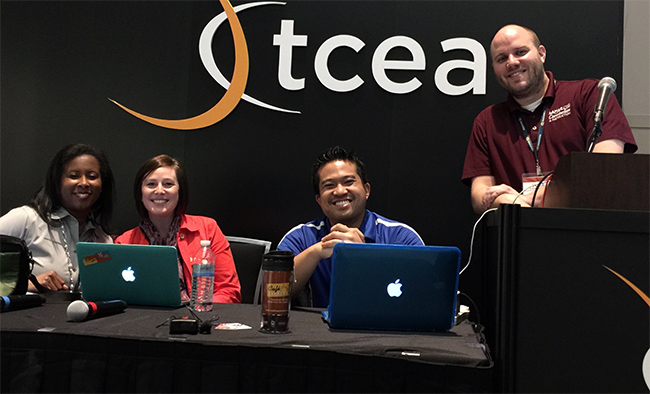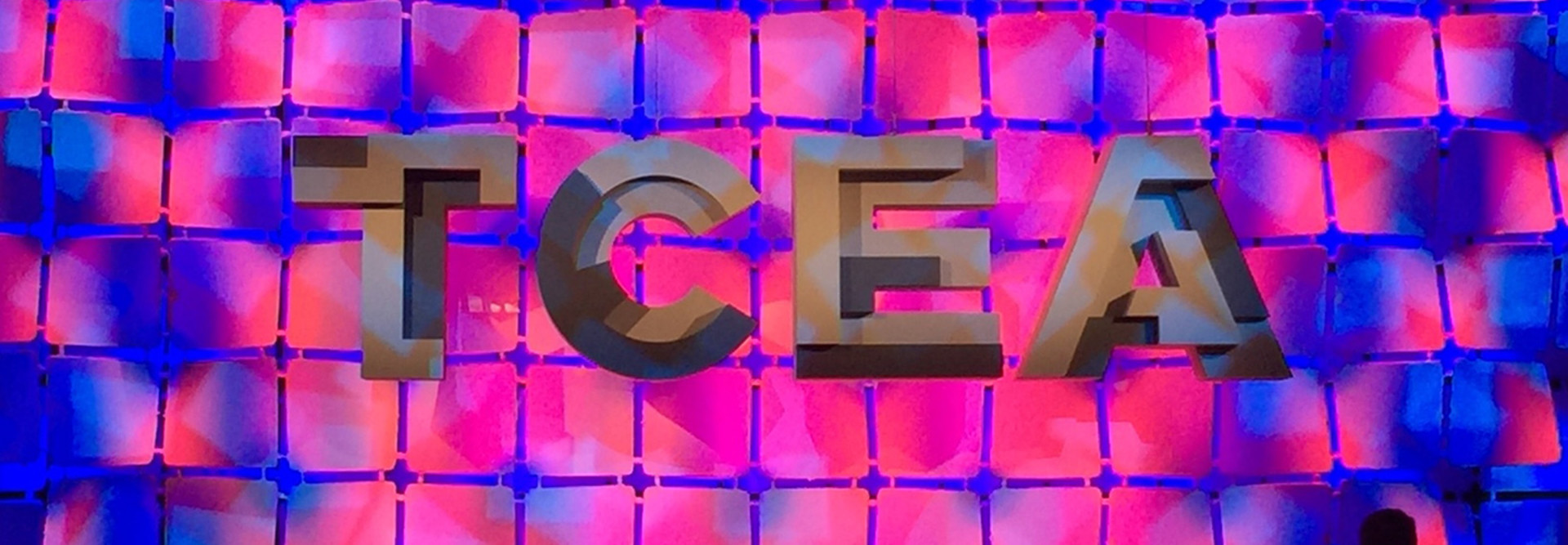TCEA 2016: Panelists Debate the Hottest K–12 Technologies
Notebooks and video conferencing are among the hottest technologies in education right now.
That’s according to four experts who figuratively duked it out during a panel discussion Wednesday to determine “what’s hot and what’s not” in K–12 technology.
The fast-paced debate, which was held on the fourth day of the Texas Computer Education Association (TCEA) 2016 Convention and Expo, took place between Chad Jones, director of technology development at Lamar Consolidated Independent School District; Tong Utakrit, dean of students at Houston Christian High School; Jessica Johnston, instructional technology specialist at Brenham Independent School District; and Rachelle Wooten, digital learning specialist from Houston.

TCEA 2016 HOT/NOT panelists Rachelle Wooten, Jessica Johnston, Tong Utakrit and Chad Jones. Photo by Jena Passut
What’s Hot in Education Technology?
The session touched on everything from 3D printing and robotics to makerspaces. But notebooks and video conferencing were the real stars.
“We are all hot for laptops,” Jones said, pointing to the red and green dots on the screen used to indicate the “hot or not” votes for each technology. “I would choose a laptop over a tablet any day of the week.”
All four panelists agreed, too, that video conferencing was in the “hot” — or green dot — category.
“It has allowed teachers to transform their learning environments and go beyond their four walls,” Wooten said. “We’re able to connect 19 schools at one time.”
There are several options for video conferencing, including Google Hangouts, Utakrit said. The solution doesn’t have to break the bank.
“Use what you’ve got. Take advantage of these opportunities,” he advised.
The Tech on Educators' Wait and See Lists
On the subject of 3D printers, which were hot in the exhibit hall at TCEA, the panelists were evenly split between hot and not.
Wooten said the printers “make technology real and applicable,” while Johnston said she was in the not category until the market grows and prices come down.
“I don’t see global educational value right now. It’s a very small market,” she said. “I want to see some lesson plans, and then I’m going to be hot.”
Most of the panel was also hot on makerspaces, agreeing that the technology encourages creativity, collaboration and achievement and doesn’t have to cost a fortune to get started.
Jones said he was still on the fence, however, until educators could show the value of makerspaces.
“We have to do a better job of selling how makerspaces trick kids into learning,” he said.
Finally, the panelists all were in favor of teaching students to code.
“To see the students get excited about computer science was awesome,” said Wooten. “It was a great gateway.”
One panelist broke from the pack, however to call the yearly Hour of Code not hot. “I am all about coding, but I am not for making it an event,” Johnston said. “Let’s do it all the time and not just for one hour.”
EdTech is covering TCEA 2016, including articles on breakout sessions, keynotes and the pulse on social media. Keep up-to-date on all of our coverage by visiting our TCEA 2016 conference page.









